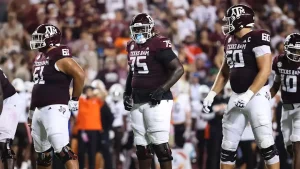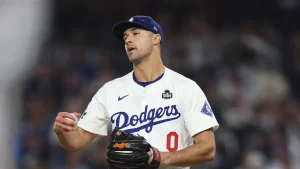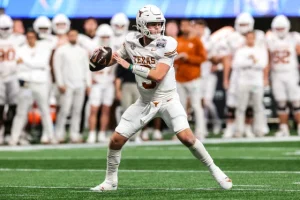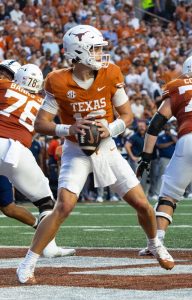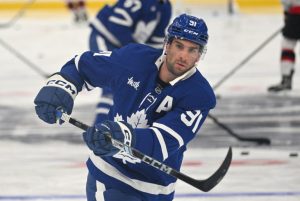For the Kentucky Wildcats, the 2023-2024 college basketball season has been a rollercoaster of emotions. High expectations were set for head coach Mark Pope’s squad after a promising recruitment class and the return of key players. However, despite flashes of brilliance, Kentucky’s defense has proven to be their Achilles’ heel, especially as they continue their SEC run. In recent games, the Wildcats’ inability to lock down opponents has left Coach Pope searching for answers, and it’s clear that unless Kentucky’s defense improves, their hopes of making a deep postseason run will continue to be a distant dream.
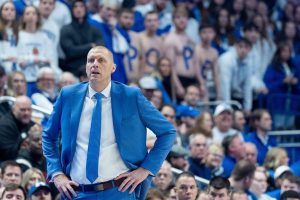
As the SEC continues to get more competitive, the pressure on Pope and his team mounts. The Wildcats are no longer an automatic favorite to dominate the conference, and their inconsistent defense has allowed other teams to seize control in crucial moments. The defensive struggles have highlighted several issues within the team: lackluster communication, poor perimeter defense, and an inability to protect the paint. For a team with such high expectations, the inability to defend effectively is a glaring weakness that threatens to derail their SEC campaign.
The Start of Kentucky’s Season: Promise with Potholes
The season began with promise. The Wildcats had a mixture of talented freshmen and experienced players, led by the dynamic backcourt, the return of a few upperclassmen, and one of the best recruiting classes in the nation. Early on, the Wildcats flashed potential—tremendous offensive skill, a deep bench, and athleticism to spare. They could score in bunches and looked poised to run roughshod over the competition.
However, things began to unravel when Kentucky faced tougher SEC competition. The Wildcats were tested by aggressive defenses and physical play, but more concerning was how Kentucky’s defense continued to falter. Opposing teams were scoring at will, and Coach Pope, known for his tactical acumen, struggled to find a defensive game plan that could consistently stymie opponents.
One of the key issues has been their defensive spacing and rotation. Kentucky has struggled to contain ball handlers in pick-and-roll situations, giving up open shots and easy penetration. Their defensive lapses were particularly evident against teams that were able to dictate pace, forcing the Wildcats into a frenetic style of play that often resulted in mismatches. The defensive struggles were underscored by their inconsistency in closing out on shooters, especially against teams with dynamic perimeter players.
Key Defensive Issues for Kentucky
Kentucky’s defensive woes are multi-faceted, and the blame can be spread across several areas of their game. While the offense has had its moments, their defense has left Coach Pope with limited options as he tries to make adjustments during the SEC season.
- Perimeter Defense: One of the most glaring weaknesses for Kentucky has been their inability to defend the three-point line effectively. Throughout their SEC run, teams have routinely shot over 35% from deep against the Wildcats. Kentucky’s defenders often fail to get around screens or close out on shooters in time. Opponents have taken advantage of this, especially in crucial late-game situations, where long-range shots have led to dramatic momentum shifts.
For instance, in a critical game against a team like Arkansas, Kentucky allowed multiple open threes, which allowed the Razorbacks to stay within striking distance late in the game. The lack of ball pressure, particularly on the perimeter, has resulted in high-scoring runs from opposing teams.
- Interior Defense: Another area where Kentucky struggles is in defending the paint. Despite having some size and athleticism, they’ve allowed too many easy baskets inside. Opponents have been able to get easy layups, and Kentucky has struggled to contest shots in the post. In SEC games, where the competition is physical and demanding, the Wildcats need to be able to protect the rim consistently. Instead, they’ve often been caught out of position, allowing opposing forwards and centers to dominate down low.
This issue has been especially pronounced when facing more physically imposing teams. In one of their recent losses to Tennessee, the Wildcats’ interior defense was exploited, as the Volunteers got high-percentage shots at the rim. Even when Kentucky has matched up well on the perimeter, their defense in the paint has often been a liability, allowing easy transition points after missed shots.
- Lack of Communication: Perhaps the most frustrating aspect of Kentucky’s defense has been their lack of communication on the floor. Basketball is a team sport, and success on defense depends largely on effective communication and cohesion among players. Unfortunately, the Wildcats have often seemed disjointed on the defensive end. They’ve missed rotations, failed to switch when necessary, and allowed breakdowns that resulted in easy baskets.
In close games, these lapses in communication have been particularly costly. In a late-game scenario against Mississippi State, for example, Kentucky failed to execute a switch on a ball screen, leaving an opponent wide open for a clutch three-pointer that ultimately sealed the Wildcats’ fate. These types of breakdowns have been recurring throughout the season, and they’ve prevented Kentucky from ever establishing a strong, consistent defensive identity.
Mark Pope’s Struggles to Adjust
Mark Pope, once praised for his ability to get the most out of his players and his success in building defensive systems, has had a hard time getting his team to execute on that side of the ball. His offensive schemes have been effective, utilizing the Wildcats’ speed and talent to create scoring opportunities. But defensively, Pope’s inability to develop a cohesive and disciplined defensive game plan has placed his team in difficult situations.
While Kentucky has the athletes to be a strong defensive team, Pope’s defensive rotations have often left players scrambling. The Wildcats have relied heavily on individual talent, rather than on team defense, which has led to confusion and missed assignments. Even though Pope has tried experimenting with different defensive sets, there has yet to be a game where Kentucky’s defense has truly clicked. The lack of improvement in this area, especially against strong SEC competition, has led many to question whether Kentucky is capable of making a deep postseason run.
In addition to these tactical challenges, Pope faces a psychological hurdle. As a coach, he has a responsibility to instill confidence in his players. However, as Kentucky’s defensive issues continue to snowball, the mental toll is becoming evident. Players seem to hesitate on defensive assignments, perhaps overthinking situations where a quicker reaction or more aggressive play could have prevented the basket. This mental block is further exacerbated when the team is forced to chase high-scoring opponents who can exploit their weaknesses.
The Impact on Kentucky’s SEC Run
Kentucky entered the SEC season with the ambition to contend for both the conference title and a high seed in the NCAA Tournament. However, their defensive issues have hampered their ability to compete at the top level in the SEC. While the Wildcats have some strong individual players, such as their talented guards and versatile forwards, they have not been able to defend consistently enough to match up with the top teams in the league.
As the season progresses, Kentucky’s SEC run looks increasingly uncertain. They’ve already suffered several losses to rivals like Alabama, Tennessee, and Arkansas, where their inability to get stops in key moments played a central role. The Wildcats simply cannot afford to continue this trend of defensive lapses if they hope to finish strong in the SEC and make a deep run in the NCAA Tournament.
The pressure on Mark Pope is mounting. While his offense has the potential to compete with anyone, without defensive improvements, Kentucky’s championship aspirations are at risk. With a tough SEC schedule ahead, Pope must find a way to address these defensive issues—whether it’s through adjustments to his rotations, improving individual defense, or getting his players to communicate more effectively on the floor.
Conclusion
As Kentucky’s SEC run continues, Mark Pope faces a growing challenge: how to fix a defense that continues to haunt his team. The Wildcats have the talent, but unless they can clean up their defensive execution, they will continue to fall short in their quest for SEC supremacy. Pope’s ability to adjust and find solutions to Kentucky’s defensive struggles will ultimately determine the team’s fate for the remainder of the season. Without major improvements on that side of the ball, the Wildcats may find themselves on the outside looking in when it comes to NCAA Tournament aspirations.



